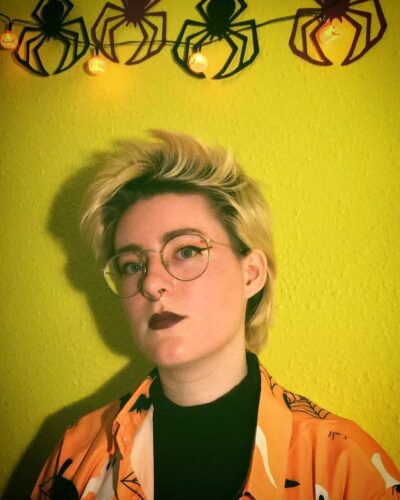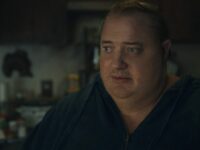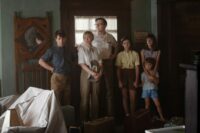Everyone knows the famous pottery scene from Jerry Zucker’s 1990 film Ghost—a romantic film made for a Valentine’s Day rewatch. Even if you haven’t seen the film, I can guarantee you know the scene. It’s become somewhat of a meme, with various films and TV shows making parodies of it. With The Righteous Brothers’ “Unchained Melody” playing in the background, the chemistry between Patrick Swayze and Demi Moore is undeniable.
The scene itself is beautifully done, so I can see why it gets the most attention. However, when looking at the bigger picture of Ghost as a whole, the romance is only one aspect of it. Sam and Molly’s relationship does form the backbone of the film, and the love between them is the driving factor. But in reality, there are so many more elements to it. Ghost is a total genre mash-up involving supernatural horror, crime thriller, drama, comedy, and tragedy.
For the first section of the film, the relationship between Sam (Patrick Swayze) and Molly (Demi Moore) is established. The couple are moving in together and doing up their apartment with the help of their friend Carl (Tony Goldwyn) in the opening scene. Although the audience isn’t explicitly told how long they’ve been dating, it’s evident from how comfortable Sam and Molly are around each other that they’re long-term. However, a little crack starts to show when Molly mentions getting married. She points out that Sam never says “I love you”, only “ditto”, which isn’t the same. From this, we can glean that Molly is a little unsure where she stands in the relationship, even if they are making progress as a couple by moving in together.
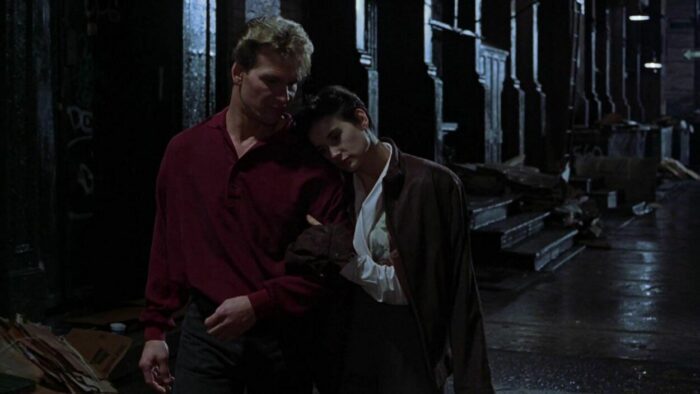
In terms of narrative drama, this conflict is introduced so there is unresolved tension between the main characters when the inciting incident occurs. This is when the real thriller aspect of the plot begins. Shortly after their conversation, a mugger approaches Sam and Molly in a dark alleyway. After a brief scuffle, a gunshot rings out. The mugger escapes, though Sam attempts to run after him. As he turns back to Molly, he sees her cradling his lifeless body and shouting for help. It’s a perfect reveal, as we’re placed in Sam’s shoes; we discover his death at the same moment he does, so we can truly empathise with his shock and confusion.
The whole mugging and murder is deeply disturbing, and shot in a way that conveys horror. When the mugger steps out of the shadows, the ominous musical cue tells us he’s to be feared. That, combined with the shadowy scenery, makes for a sinister mise-en-scéne. After Sam has been killed, the image of Molly dressed in stark white tainted by the vivid red of his blood is extremely harrowing. Even the wardrobe choice of Sam wearing a red shirt feels like a painted target on his back. From the colours, to the setting, to the event itself, it’s a horror scene through and through.
Considering Sam is a ghost, his haunting isn’t that of a traditional one. We naturally sympathise with him, since he’s one of the protagonists, especially since his reason for sticking around after death is to protect his loved one from danger. However, there are still certain tropes at play. For example, the subway ghost (Vincent Schiavelli) that Sam stumbles upon displays extreme territoriality over the train carriage in which he dwells. This is a common part of poltergeist lore; ghosts can be tied to a specific location of personal significance to them, and become hostile to any other entities that try to inhabit the same space. We later discover that this ghost was killed by being pushed onto the platform, therefore he’s trapped at the site of his demise. He also claims it “wasn’t [his] time”, that he “wasn’t supposed to go”. This further demonstrates the classic ghost lore of being unable to move on to the afterlife due to unfinished business, such as having passed away too soon. As we know, this applies to Sam, too.
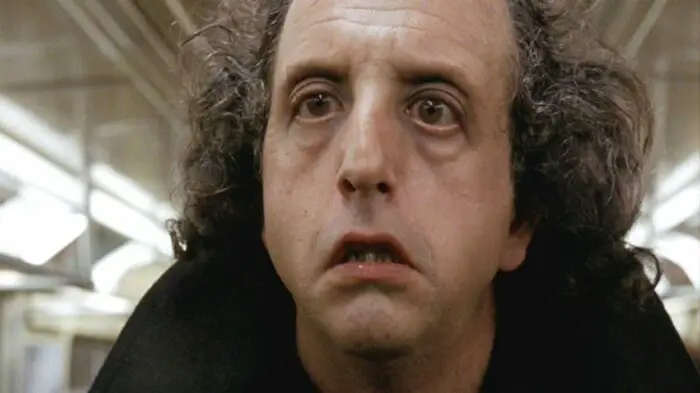
When the subway ghost threatens Sam and chases him out of the train carriage, it’s rather creepy. He even goes so far as to shove Sam’s head out of the train so he’s hovering above the tracks. Of course, we know he can’t actually be hurt since another train can’t hit his incorporeal form, but the fear is very much still alive. Since it’s also the first negative experience Sam has with another ghost, it reminds us that being stuck in this type of afterlife is actually quite terrifying.
As Sam settles into his role as a ghost, and learns some tricks of the trade from the subway ghost, he becomes more confident in affecting the world around him. With practise, he’s able to move and throw objects. This comes in handy towards the end of the film when he uses this ability to strike fear into the villains; namely, his traitorous friend Carl, and Willy Lopez (Rick Aviles). Catching Carl alone in the office as he panics over the lost money, Sam types ‘MURDERER’ onto the computer, followed by rows and rows of his own name, confirming that he is in fact haunting him. It’s a fun subversion of the typical poltergeist haunting, considering we’re viewing it with full knowledge of who the ghost is, and sympathising with him. We want Carl to be scared. We revel in the terror he’s experiencing because he’s such an awful person.
Similarly, Sam later follows Lopez through an apartment building. He kicks up a fuss by flinging objects around, knocking paintings off the wall, and writing ‘BOO’ in condensation on a bathroom mirror. All very typical of a classic haunting. Again, the audience isn’t supposed to be scared, but rather find amusement in Lopez’s fear. We can also see from Patrick Swayze’s performance that Sam is very much enjoying scaring Lopez. However, the scene turns dark quite quickly when Lopez is chased into the road and crushed to death by two vehicles. It’s evident that this wasn’t Sam’s intention, but he did still contribute to a gory and violent death. The shot of Lopez’s body is brutal.
Elevating the terror of the scene is what happens to Lopez after he dies. In contrast with the beam of white light from above, beckoning previous deceased characters to heaven, Lopez is greeted by shadowy figures that drag him to hell. They make horrible groaning sounds as they reach out and grapple him. It’s his comeuppance for being a bad person, but it’s hard to feel satisfied upon witnessing such a terrible end. This also happens to Carl when he dies later on.
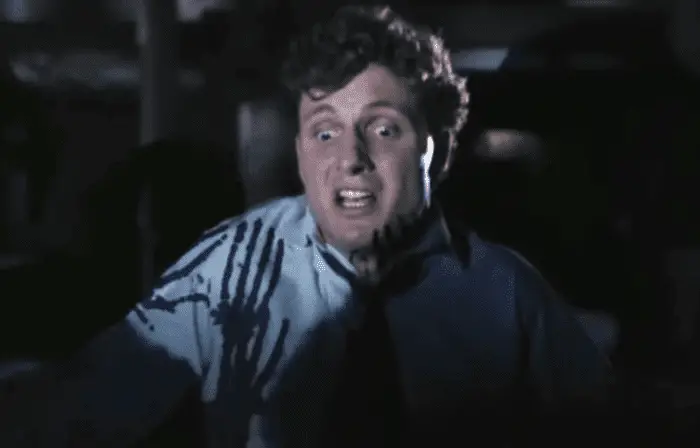
Carl’s death, in itself, is also a shocking scene. Again, he’s being chased by Sam, and lashes out by throwing a pulley. Unfortunately for him, it swings back and smashes the window he’s trying to escape from, causing a huge pane of glass to impale him. The way the blood sprays up the shard is visually frightening. In general, the violence of such a demise has a strong horror movie feel to it. Despite Carl being an unlikeable villain, there’s an air of tragedy to his death considering he was a close friend of Sam and Molly’s. Additionally, Carl ultimately caused his own death, not just by physically breaking the window that killed him, but also by getting more and more involved in crime and violence.
Which brings me to my next point; Ghost also functions as a crime drama. The general plot is that of a criminal conspiracy, with Sam and Molly’s involvement being purely incidental. Carl is laundering money from the bank he and Sam work for, and hires Willy Lopez only to mug Sam so he can have access to information concerning accounts. Sam’s murder wasn’t premeditated, but that event meant Carl sank deeper into corruption by having to cover it up. This narrative is revealed gradually as the film goes on; initially, we assume the mugging was a random tragedy. It’s all the more shocking when we find out that Carl hired him.
The dramatic tension is extremely effective in this regard. We know, along with Sam, that Lopez and Carl are both after Molly, but there’s nothing he can do but watch for the first part of the film. In particular, the scene where Lopez breaks into Molly’s apartment while she’s still in the house is alarming for both Sam and the audience. The home invasion aspect paired with the obliviousness of the protagonist in danger reflects horror movie tropes. It also emphasises Sam’s loneliness and frustration at his inability to protect Molly.
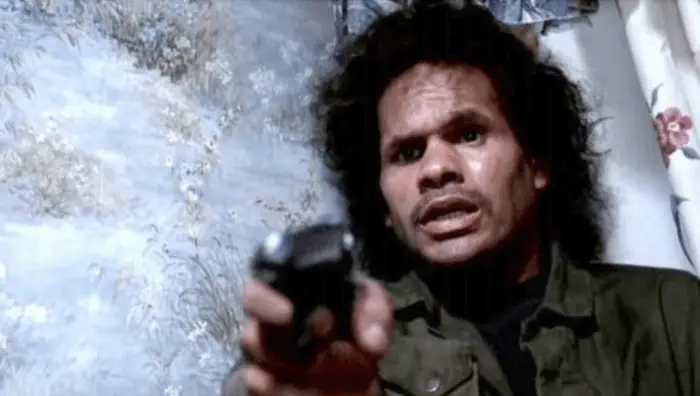
As soon as Sam meets Oda Mae Brown (Whoopi Goldberg), there’s yet another tonal shift. Oda Mae is a fake psychic who has made a career out of scamming mourners. So when Sam stumbles across her parlour, she’s in for a surprise when she hears an actual ghost during one of her ‘séances’. This is where the comedy begins. Sam insulting Oda Mae as she becomes increasingly confused and agitated at being unable to pinpoint where his voice is coming from is wonderfully humorous. Even just the simple irony of a fake psychic turning out to be a legit psychic is an excellent subversion. From this point onwards, Sam and Oda Mae become an entertaining comedy duo throughout the rest of the film.
With the two of them joining forces to solve the case, protect Molly, and pursue the bad guys, it almost gives Ghost a buddy-cop element to it. Whoopi Goldberg and Patrick Swayze’s chemistry is delightful, and helps to alleviate the often heavy tone of the film. For example, the entire sequence of Oda Mae going to the bank to close the account, then having to donate the $4 million to some nuns immediately afterwards is comedy gold. It truly wouldn’t be the same without Whoopi Goldberg’s star presence.
Despite the predominant comedic relief of Sam and Oda Mae’s interactions, a genuine friendship blossoms between them over the course of Ghost. You can tell they really do care about each other, no matter how much Oda Mae threatens to walk away, or how many times Sam gets annoyed with her. Because Oda Mae does stay, and Sam ends up protecting her as well as Molly. Especially in the third act, the fondness between them is heartfelt.
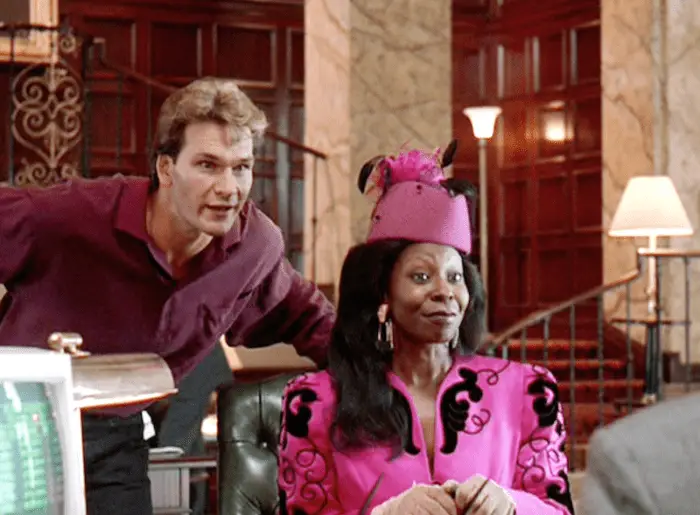
There are certainly moments in Ghost that make you laugh, but sadly that must go hand-in-hand with the moments that make you cry. Tragedy forms the bookends of the film. It’s easy to forget that Sam died at the start; even though the bad guys have been defeated and Sam has exacted retribution, he can’t live happily ever after with Molly. He has to say goodbye and move on to the afterlife. And Molly will be left alone with her grief.
It’s a downer to end on, but Sam and Molly’s final moment together is highly sentimental, and any remaining conflict is resolved when Sam says “I love you”. After all, it’s better to have loved and lost than never loved at all. Plus, Molly isn’t actually going to be alone now. The predatory Carl is out of the picture, and instead she has a true friend in Oda Mae. I can imagine, after such a unique shared experience, that they’d remain in contact after the credits roll.
Although I can see why Ghost is remembered for the pottery scene and the romance, there’s so much more to it than that. It’s a tear-jerker, a gut-wrencher, a side-splitter; it’s got real heart. But regardless of its many facets, it’s still a damn good Valentine’s Day film.

